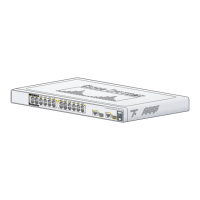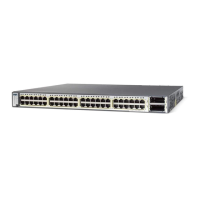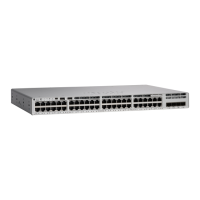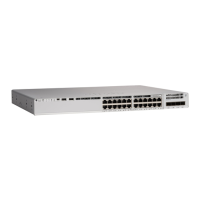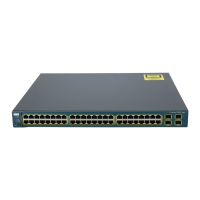3-3
User Guide for the Catalyst Express 500 Switches
OL-8122-01
Chapter 3 Customization
Optimize Ports through Smartports Port Roles
Table 3-1 Smartports Port Roles
Port Role Description
Apply this role to ports that will be connected to desktop devices, such as
desktop PCs, workstations, notebook PCs, and other client-based hosts.
Note Do not apply this role to ports that will be connected to switches,
routers, or access points.
Apply this role to ports that will be connected to IP phones.
A desktop device, such as a PC, can be connected to the IP phone. Both the
IP phone and connected PC would have access to the network and the Internet
through the switch port.
This role prioritizes voice traffic over data traffic to ensure clear voice
reception on the IP phones.
Apply this role to ports that will be connected to other switches.
Apply this role to ports that will be connected to WAN devices that connect
to the Internet, such as routers and Layer 3 switches with routing service
capabilities, firewalls, or virtual private network concentrators.
Apply this role to ports that will be connected to non-PoE and PoE-capable
wireless access points. The access point can provide network access to up to
30 mobile (wireless) users.
Apply this role to ports that will be connected to servers that provide network
services, such as exchange servers, collaborative servers, terminal servers,
file servers, Dynamic Host Configuration Protocol (DHCP) servers, IP PBX
server, and so on.
This role is for Gigabit or non-Gigabit ports, depending on the server type to
be connected.
This role prioritizes server traffic as trusted, critical, business, or standard,
depending on the function of the server.
Apply this role to ports that will be connected to a printer, such as a network
printer.
This role prevents printer traffic from affecting voice and critical data traffic.

